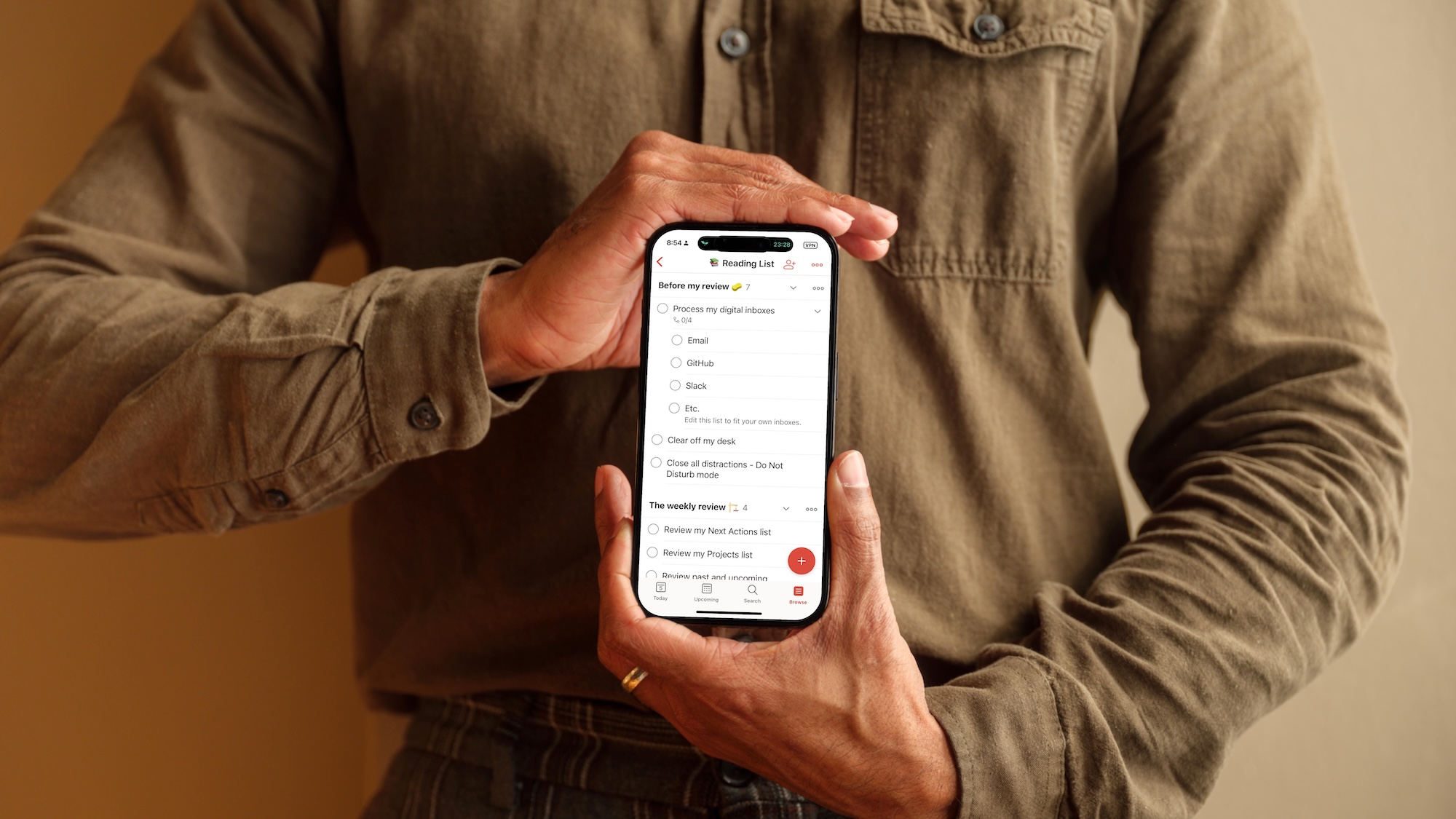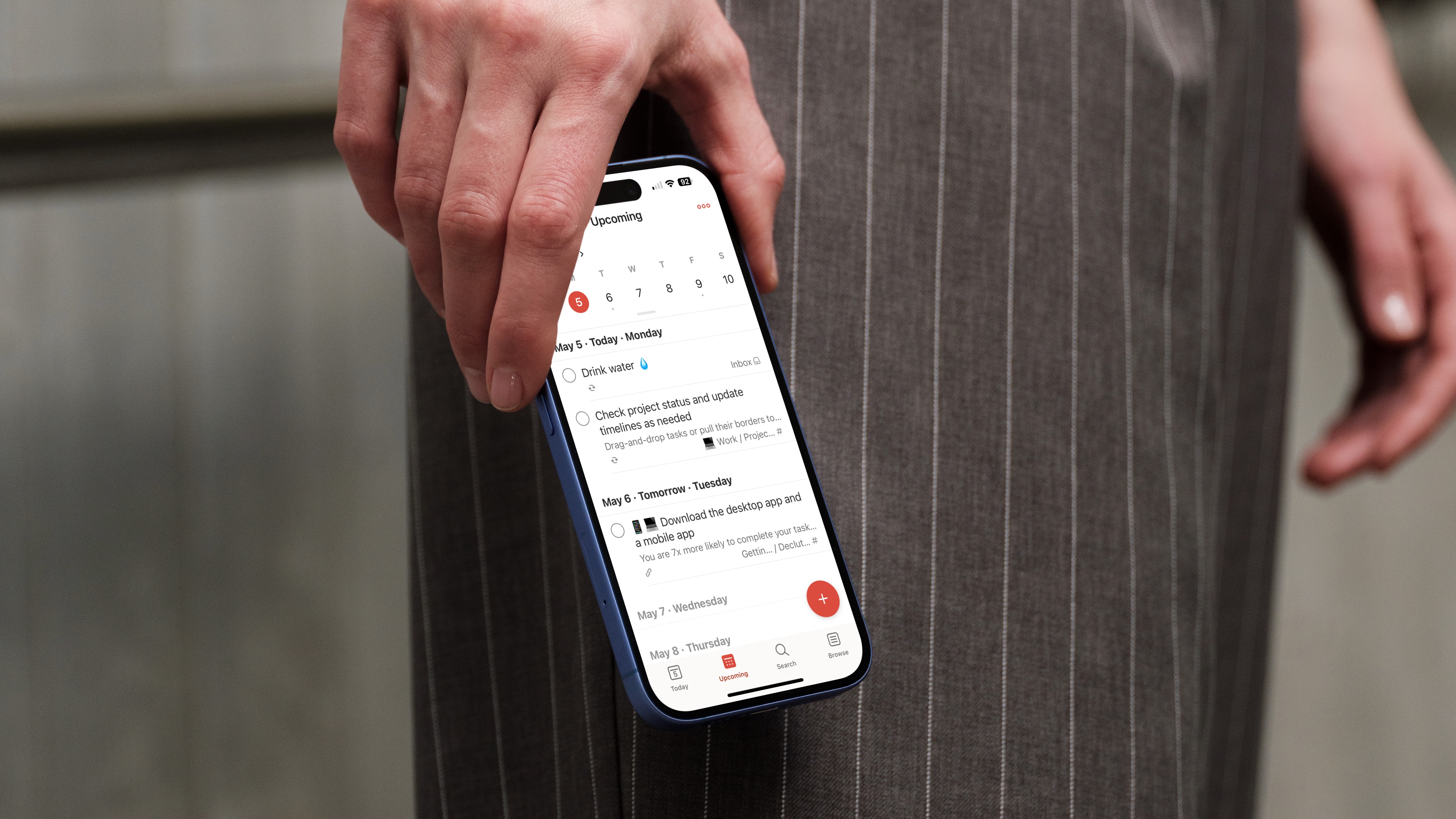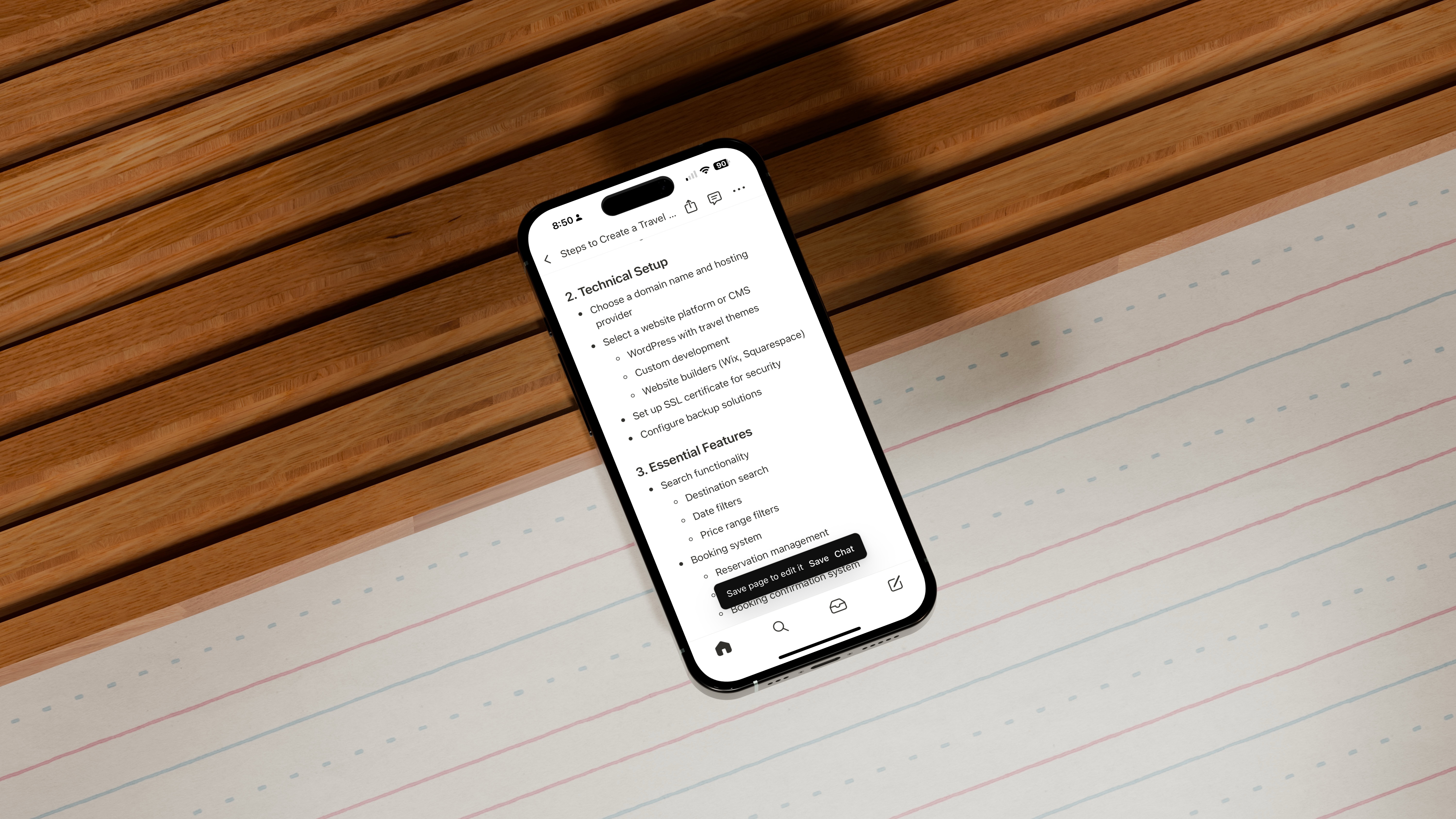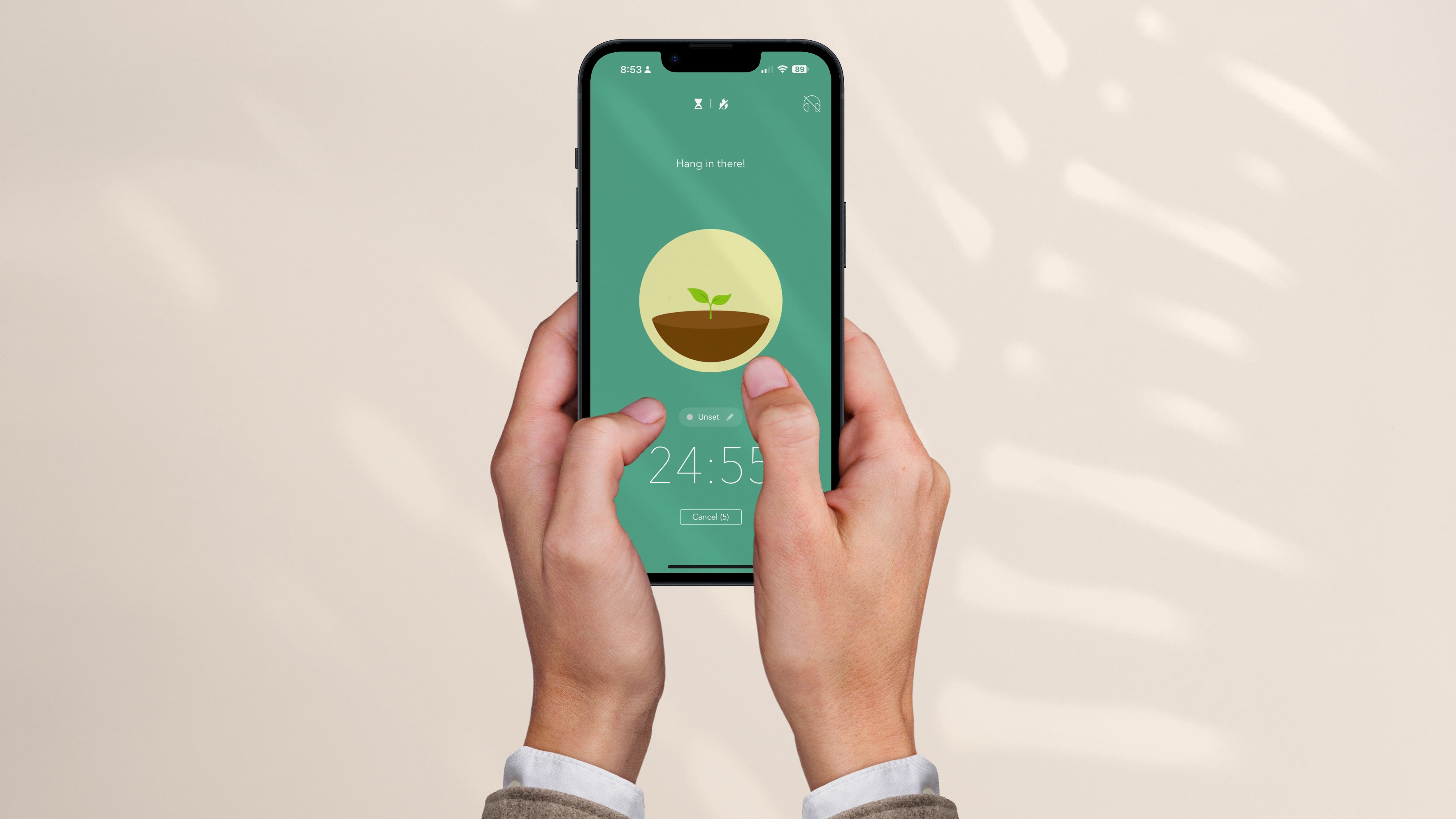I use productivity apps obsessively, and these are ones I'd buy with my own money
These three apps get me through each day, lowering my stress and making me more productive

It's true, I have a love affair with productivity apps.
I've tried countless tools promising to streamline my workflow, but only a select few have truly earned a permanent spot on my digital desktop and, more importantly, would warrant my hard-earned cash.
Todoist

At the top of that list is Todoist.
Its intuitive design and cross-platform functionality make managing tasks a breeze, offering the perfect balance between simplicity for everyday tasks and powerful features like project management, labels, and filters for more complex undertakings.
Todoist is a popular and highly-regarded task management application known for its intuitive interface and cross-platform functionality.
A significant pro is its ease of use, allowing users to add and organize tasks with natural language processing quickly.
It boasts excellent cross-platform support, seamlessly syncing across various devices like smartphones, tablets, and computers, ensuring you can manage your tasks anywhere.
Sign up to the TechRadar Pro newsletter to get all the top news, opinion, features and guidance your business needs to succeed!
Todoist offers a robust set of features, even in its free version, including creating projects, setting due dates, and using labels and filters for organization. For more advanced users, the paid versions unlock powerful features like reminders, file uploads, project templates, and more extensive collaboration capabilities.
The app is also praised for its reliability and consistent development, with regular updates and new features being introduced. Furthermore, Todoist integrates with many other apps, enhancing workflow automation.
However, Todoist also has its cons. The free version has limitations, such as the number of active projects and collaborators per project, which might not suffice for users with more complex needs or larger teams.
While the interface is generally clean, some users might find it too minimalist and desire more visual customization options.
The pricing for the Pro and Business plans can be a drawback for individuals or smaller teams on a tight budget. Additionally, some users have reported issues with customer service responsiveness.
While Todoist offers sub-tasks, the system is considered basic by some who require more intricate task breakdowns. Finally, some users might find the sheer number of features overwhelming, needing time to learn and utilize them effectively.
Todoist is best suited for individuals, busy professionals, and small teams who need a reliable, user-friendly, and versatile task management tool to organize their work and personal lives.
Its simplicity and powerful features make it an excellent choice for those looking to move beyond basic to-do lists and implement a more structured approach to task management across multiple devices.
It's particularly beneficial for users who value ease of use, cross-platform syncing, and the ability to integrate their task management with other productivity tools.
You can start using Todoist for free. To unlock all its features, you can subscribe to Pro or Business plans starting at $4 per month. The app is available across multiple devices, including desktop, Android, iOS, wearables, and as browser extensions.
Notion

Then there's Notion, which has become my digital Swiss Army knife.
It's more than just a note-taking app; it's a workspace where I can organize projects, track goals, manage databases, and even build simple websites.
The flexibility it offers is unparalleled, making it an indispensable tool for personal and professional organizations.
Notion is a versatile all-in-one workspace application that provides building blocks and tools to create customized systems for note-taking, project management, knowledge bases, and more.
Its strength lies in its flexibility; users can design their layouts and workflows using a drag-and-drop interface and a variety of content blocks, including text, images, databases, and embedded media.
This allows for a highly personalized organization system tailored to individual or team needs.
However, this extensive customizability can also be a significant drawback.
The initial blank canvas and the sheer number of features can overwhelm new users, leading to a steep learning curve.
Unlike more specialized apps with predefined structures, Notion requires users to invest time understanding its logic and setting up their workspaces effectively.
Another potential con is that while it offers project management features like Kanban boards and task lists, it may lack the advanced functionalities of dedicated project management software, such as Gantt charts, built-in time tracking, and detailed reporting.
Additionally, the mobile app can sometimes be less intuitive and have fewer features than the desktop version.
Performance can also become an issue with extensive databases or complex pages, occasionally leading to slowdowns.
Finally, Notion primarily operates online, and while it has desktop apps, they essentially function as web wrappers, meaning reliable offline access is limited.
Despite these drawbacks, Notion is best suited for individuals and teams who value a highly customizable and interconnected workspace.
It's excellent for those who want a single platform to handle various aspects of their work and personal lives, from managing tasks and projects to building personal wikis and sharing information collaboratively.
Creatives, freelancers, small businesses, and remote teams can particularly benefit from its flexibility in adapting to diverse workflows and its collaborative features.
If you're willing to invest the time to learn its intricacies and build a system that fits your needs, Notion can become a potent and indispensable tool.
Notion is free for individuals to organize their at-home projects on a limited basis. A $10 monthly Plus subscription unlocks Notion’s features and limits. There are also Business and Enterprise plans. Notion is available on Android, iOS, Windows, and Mac.
Forest

Finally, I have to mention Forest. This ingenious yet straightforward app gamifies focus by growing a virtual tree while you work in a world clamoring for your attention.
If you leave the app, your tree withers, providing a surprisingly effective visual deterrent against distractions. These aren't just fleeting digital novelties; they are the reliable workhorses that genuinely enhance my productivity, and I wholeheartedly recommend investing in them.
The Forest app is a unique productivity tool centered around gamification to help users stay focused and reduce phone usage.
The core concept is simple: when you want to concentrate, you plant a virtual tree within the app, setting a timer for your desired focus duration.
As long as you remain within the Forest app, your tree grows. However, if you succumb to the temptation of using other apps before the timer ends, your tree dies, visually representing your distraction.
One of the significant pros of the Forest app is its engaging and motivational approach.
The visual element of growing a forest and the slight guilt associated with killing a tree can surprisingly deter phone use. It offers a tangible reward for focus and a negative consequence for distraction, which can help build better habits.
The app also allows for customization of focus session durations and even has a "deep focus" mode to restrict further access to other apps.
Additionally, Forest offers the ability to earn coins for successful focus sessions, which can then be used to unlock different virtual tree species and, for some users, contribute to planting real trees through a partnership with an environmental organization.
The app also provides statistics on your focused time, allowing you to track your progress.
However, there are also cons to consider.
The app costs $3.99 to purchase upfront on iOS, and while there's a free version on Android, full functionality often requires a paid upgrade.
Some users might find the need to actively open the app for every focus session a bit cumbersome.
While the "whitelist" feature allows access to essential apps during focus time, it could also be seen as a way to "cheat" the system for those less committed.
Furthermore, the number of real trees a user can plant through earned coins is often limited. While generally appealing, some have noted the user interface to be less intuitive in certain aspects.
Ultimately, the Forest app is best for visually motivated individuals who respond well to gamified systems.
It's beneficial for students, remote workers, or anyone struggling with phone distractions and procrastination who needs a gentle yet persistent reminder to stay on task.
The app's ability to track focused time and visualize progress as a growing forest can provide a sense of accomplishment and encourage the development of better focus habits over time.
Bryan M. Wolfe is a staff writer at TechRadar, iMore, and wherever Future can use him. Though his passion is Apple-based products, he doesn't have a problem using Windows and Android. Bryan's a single father of a 15-year-old daughter and a puppy, Isabelle. Thanks for reading!
You must confirm your public display name before commenting
Please logout and then login again, you will then be prompted to enter your display name.
